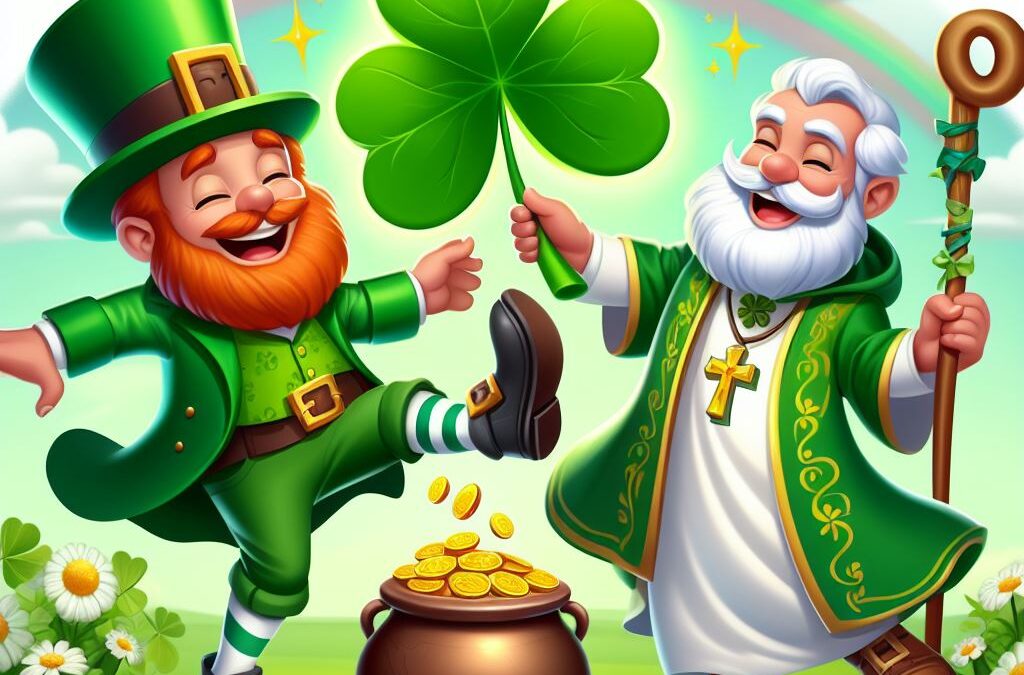St. Patrick’s Day: A Celebration of Faith, Heritage, and Green
As March unfolds, the world dons its emerald hues and gathers to celebrate St. Patrick’s Day—a vibrant and spirited occasion that transcends borders and unites hearts. But beyond the sea of green attire and lively parades lies a rich tapestry of history, faith, and cultural heritage. Let’s delve into the origins and traditions associated with this festive day, honoring the patron saint of Ireland.
Who Was St. Patrick?
Saint Patrick, born in Roman Britain during the early fourth century, embarked on a remarkable journey that would forever shape the Emerald Isle. Kidnapped and brought to Ireland as a slave at the tender age of 16, Patrick endured hardship and adversity. Yet, his faith remained unyielding. After escaping captivity, he returned to Ireland, driven by a divine calling—to bring Christianity to its people.
Legend of the Shamrock
Perhaps the most enduring legend of St. Patrick is his use of the native Irish clover—the shamrock—to explain the Holy Trinity. With its three leaves representing the Father, Son, and Holy Spirit, the shamrock became a powerful symbol of faith and unity.
Early Observance in Ireland
For over 1,000 years, the Irish have observed St. Patrick’s Day as a religious holiday. Traditionally, families would gather in the morning for church services, seeking spiritual renewal. As the sun climbed higher, Lenten prohibitions against meat consumption were lifted, allowing households to feast on the traditional meal of Irish bacon and cabbage. The air buzzed with joy, and communities rejoiced in their shared faith.
The First St. Patrick’s Day Parade
Surprisingly, the inaugural St. Patrick’s Day parade did not unfold on Irish soil but across the Atlantic in America. Records reveal that on March 17, 1601, a Spanish colony in what is now St. Augustine, Florida, hosted the first-ever parade. Irish vicar Ricardo Artur orchestrated this celebration, laying the foundation for a tradition that would span centuries.
Growth of Celebrations
Fast-forward to March 17, 1772, when homesick Irish soldiers—serving in the English military—marched through the bustling streets of New York City. Their purpose? To honor the Irish patron saint and kindle the flames of their heritage. From that pivotal moment, St. Patrick’s Day parades flourished across early American cities, each step echoing resilience, camaraderie, and unwavering faith.
Modern Traditions
Today, St. Patrick’s Day transcends borders, inviting people worldwide to partake in its spirited festivities. Here’s how we celebrate:
- Parades: More than 100 St. Patrick’s Day parades crisscross the United States, with New York City and Boston hosting the grandest spectacles.
- Wearing Green: From shamrock-adorned hats to verdant scarves, green attire unites us all.
- Irish Food: Savor hearty Irish stews, soda bread, and perhaps a pint of stout.
- Dancing and Music: Reels, jigs, and lively tunes fill the air as we dance with joy.
- Leprechauns and Legends: These mischievous beings and their pots of gold add whimsy to the day.
So, whether you’re Irish by birth or Irish at heart, let St. Patrick’s Day remind us of our shared humanity, our enduring faith, and the vibrant tapestry of cultures that enrich our world.
May the shamrock’s leaves—Father, Son, and Holy Spirit—bless you this St. Patrick’s Day!
References:


